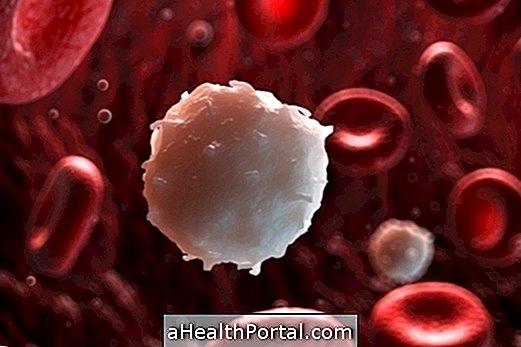Multiple myeloma is a cancer that affects the cells produced by the bone marrow, called plasmocytes, that have their functioning damaged and multiply in a disordered way in the body.
This disease is more common in the elderly, and in the early stages does not cause symptoms, until the multiplication of imperfect plasma cells increases greatly and causes signs and symptoms such as anemia, bone changes, increased calcium in the blood, impairment of kidney function and risk of infection.
Multiple myeloma is still considered an incurable disease, however, with the treatments available today it is possible to obtain periods of stabilization of the disease for years and even decades. Treatment options are indicated by the hematologist, and include chemotherapy with a combination of medications, in addition to bone marrow transplantation.

Signs and symptoms
In the initial phase, the disease does not cause symptoms. At a later stage, multiple myeloma can cause:
- Decreased physical capacity;
- Fatigue;
- Weakness;
- Nausea and vomiting;
- Loss of appetite;
- Weight loss;
- Pain in the bones;
- Frequent bone fractures;
- Blood changes such as anemia, decreased white blood cells and platelets. Learn more about this serious bone marrow complication.
- Alteration in peripheral nerves.
Symptoms related to increased calcium levels, such as fatigue, mental confusion, or arrhythmia, as well as changes in kidney function, such as urinary changes, may also be seen.
How to confirm
In order to diagnose multiple myeloma, in addition to clinical evaluation, the hematologist will request tests that help confirm this disease. The myelogram is an essential exam because it is an aspirate of the bone marrow that will allow to analyze the cells that make up the marrow, being able to identify the agglomerate of plasmocytes, that in the disease occupy more than 10% of this place. Understand what myelogram is and how it is done.
Another essential test is called protein electrophoresis, which can be done with a blood or urine sample, and is able to identify the increase of the defective antibody produced by the plasmids, called the M protein. These tests can be supplemented with immunological tests, such as protein immunofixation.
It is also necessary to perform tests that accompany and evaluate the complications of the disease, such as hemogram to assess anemia and blood changes, calcium dosage, which may be elevated, creatinine test to check kidney function and bone imaging, such as radiography and resonance.

How Multiple Myeloma Develops
Multiple myeloma is a cancer of genetic origin, but its exact causes are still not fully understood. It causes a disordered multiplication of the plasma cells, which are important cells generated in the bone marrow with the function of producing antibodies for the defense of the organism.
In people with this disease, these plasmocitos can generate clusters that accumulate in the bone marrow, causing changes in its functioning, and also in other diverse places of the body, like bones.
In addition, plasma cells do not produce antibodies properly, producing in place a protein without utility, called M protein, with a greater predisposition to infections and chances of causing obstruction of the kidney filtration tubules.
Does Multiple Myeloma Cure?
Nowadays, the treatment of multiple myeloma has evolved a lot in relation to the medicines available, so, although it is not yet stated that this disease has a cure, it is possible to live with it in a stabilized way for many years.
Thus, once a multiple myeloma patient had a survival of 2, 4 or at most 5 years, however, currently and with the appropriate treatment it is possible to live for more than 10 or 20 years. However, it is important to remember that there is no rule, and that each case is variable according to several factors such as age, health conditions and severity of the disease.
How is the treatment done?
Treatment with medicinal products is only indicated for patients with multiple myeloma with symptoms, and those who have alterations in the exams but who do not have physical complaints should remain in follow-up with the hematologist at a frequency determined by him, which may be every 6 months, for example.
Some major drug options include Dexamethasone, Cyclophosphamide, Bortezomib, Thalidomide, Doxorubicin, Cisplatin, or Vincistine, for example, which are usually combined by the hematologist in chemotherapy cycles. In addition, several drugs are in the testing phase to increasingly facilitate the treatment of patients with this disease.
Bone marrow transplantation is a good option to manage the disease well, however, it is only recommended for patients who are not very old, preferably under 70 years, or who do not have serious diseases that limit their physical capacity, such as heart or lung disease. Learn more about how bone marrow transplantation is done, when indicated, and the risks.




















